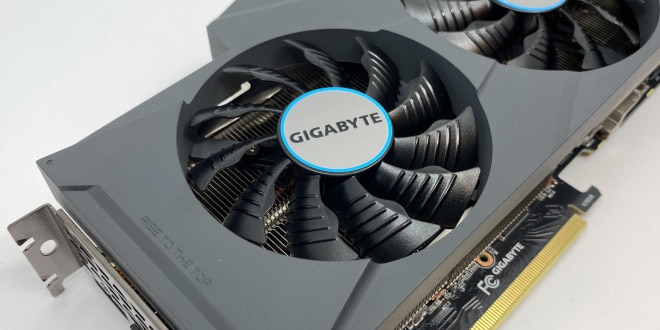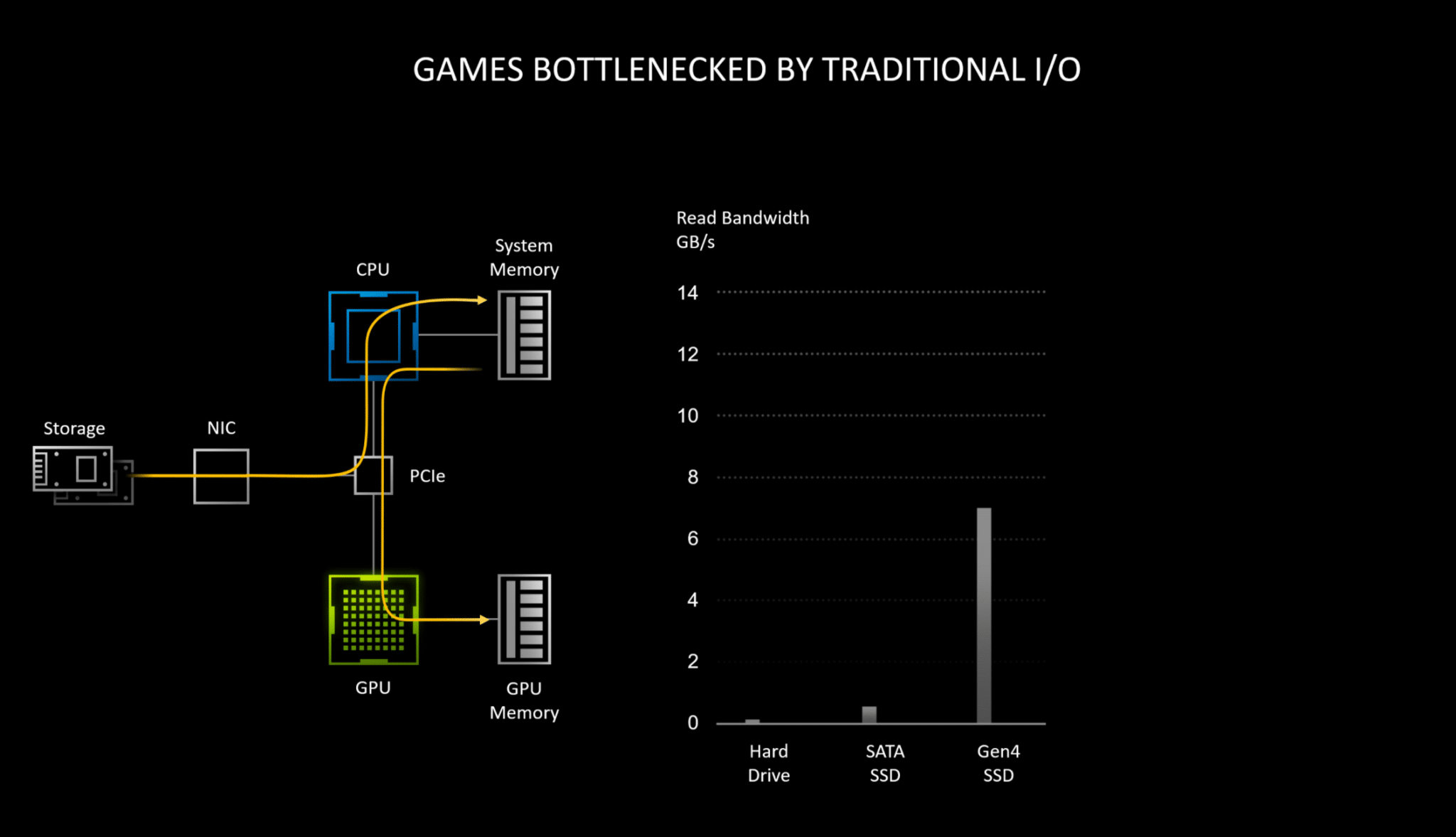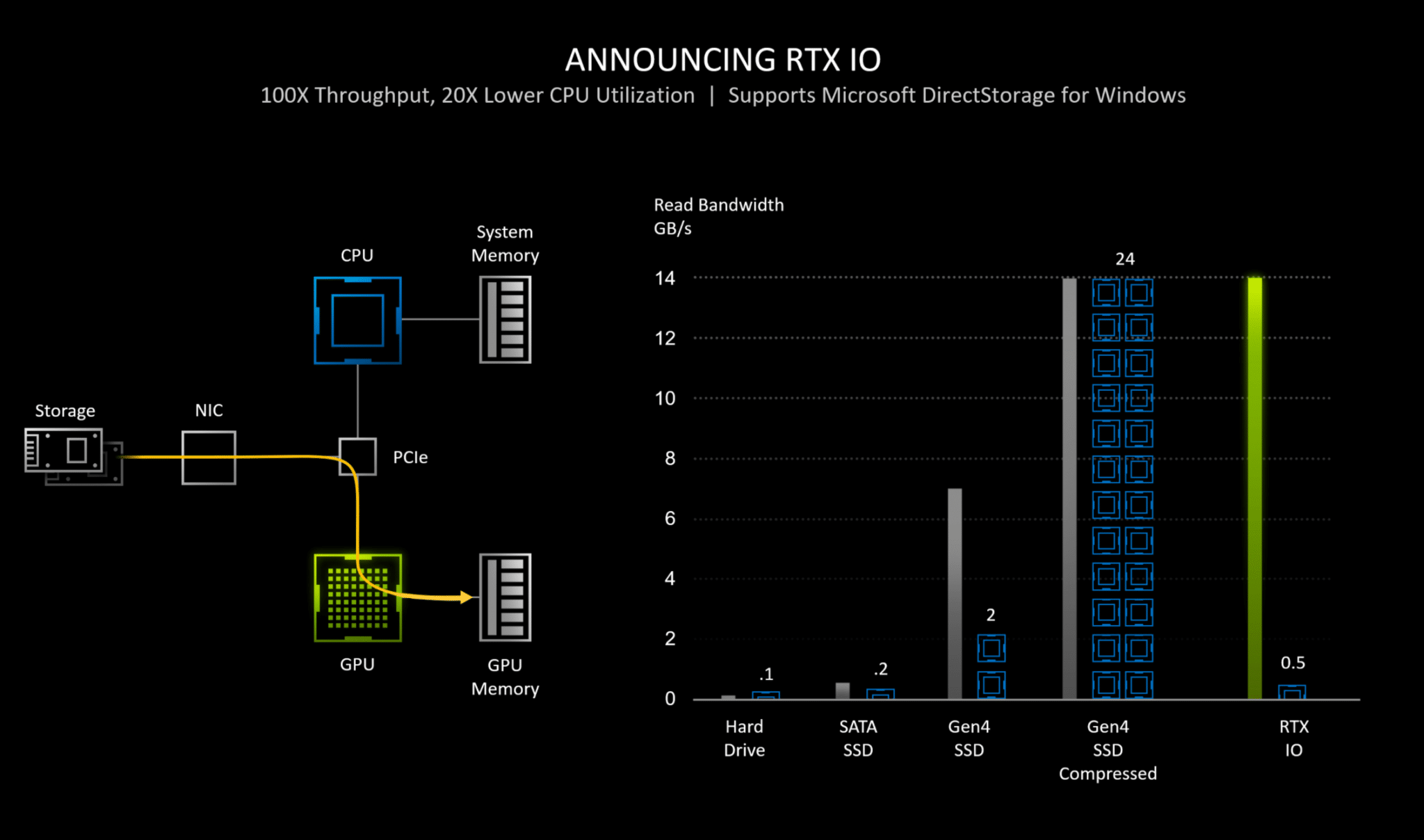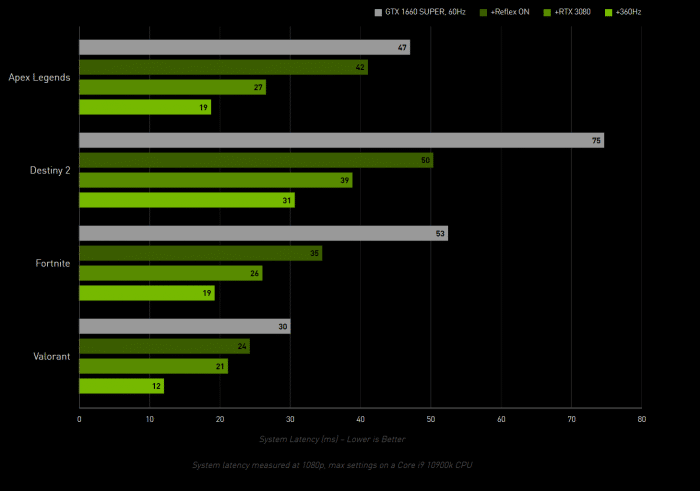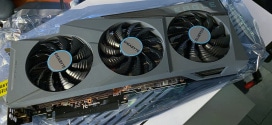Before we look at the actual card let’s look at the RTX 30-series.
Specifications
| GPU | RTX 3090 | RTX 3080 (FE) | RTX 2080 Ti (FE) | RTX 2080 SUPER | RTX 2080 (FE) |
| SMs | 82 | 68 | 68 | 48 | 46 |
| CUDA Cores | 10496 | 8704 | 4352 | 3072 | 2944 |
| Tensor Cores | 328 | 272 | 544 | 384 | 368 |
| RT Cores | 82 | 68 | 68 | 48 | 46 |
| Texture Units | 328 | 272 | 272 | 192 | 184 |
| ROPs | 112 | 96 | 88 | 64 | 64 |
| GPU Boost Clock | 1695 MHz | 1710 MHz | 1635 MHz | 1815 MHz | 1800 MHz |
| Memory Data Rate | 19.5 Gbps | 19 Gbps | 14 Gbps | 15.5 Gbps | 14 Gbps |
| Total Video Memory | 24GB GDDR6X | 10GB GDDR6X | 11GB GDDR6 | 8GB GDDR6 | 8GB GDDR6 |
| Memory Interface | 384-bit | 320-bit | 352-bit | 256-bit | 256-bit |
| Memory Bandwidth | 936 GB/Sec | 760 GB/Sec | 616 GB/sec | 496.1 GB/sec | 448 GB/sec |
| TGP | 350W | 320W | 260W | 250W | 225W |
Features of the RTX 3090
Both the RTX 3080 and the RTX 3090 comes with a lot more CUDA cores compared to the RTX RTX 2080Ti. These CUDA cores are not completely the same as roughly half of those cores can shift between FP32 shader cores and INT32 integer cores depending on what the game or application wants at the time. Compared to the RTX 3080 the RTX 3080 has 20% more.
The memory is upgraded to GDDR6X and uses a 384-bit memory interface, compared to 320-bit on the RTX 3080, giving us a maximum 936 GB/Sec whic is up from 769 GB/sec on the RTX 3080. The big upgrade over the RTX 3080 is that you get 24 GB of GDDR6X memory. As I mentioned in the RTX 3080 I do not think that 10 GB will be a problem for a long time and for most users but if you use your computer for stuff like rendering then the extra memory will be very usefull. There is a reason this card is more aimed at professionals that want to game a bit than regular gamers.
The RTX 3090 also is the only card in the 30-series at the time of writing that supports Nvidia NVLINK™. This isn’t like the old SLI where any game could use it, no – now the games/programs will have to add support. In my view this is only for professionals where for example a render-software will add support.
The TGP is 350 W and Nvidia claims it is also more efficient so that the 30-series offers 1.9x performance per watt over the 20-series.
The series 30 comes with upgrades to the different RTX processing systems: the programmable shader (2.7X improvement), the RT Core used for ray tracing (1.7x) and the Tensor Core which is used for DLSS and RTC Voice (2.7x).
RTX IO, RTX Reflex, RTX Broadcast, DLSS 2.1
It wouldn’t be a new card if Nvidia didn’t release some new cool features with it.
RTX IO
This technology sounds very exciting. A lot has been said about the PS5 (and Xbox Series X) ability to fast load stuff from a SSD. RTX IO is something similar for the PC. When used with Microsoft’s new DirectStorage for Windows API, RTX IO offloads dozens of CPU cores’ worth of work to your GeForce RTX GPU, improving frame rates, enabling near-instantaneous game loading, and opening the door to a new era of large, incredibly detailed open world games.
I’m looking forward to see how this works. The caveat of course is that this is a technology that isn’t available right now. Microsoft hasn’t release DirectStorage yet and when it is release there will probably be few games supporting it right away. This might be a technology, like Ray tracing and DLSS, that needs a lot of time maturing before becoming more commonplace.
RTX REFLEX
If you are an e-sporter then this is for you. This technology combines GPU and game optimizations to reduces the latecy. For non-competitive people like me this is probably completely useless but if you are playing competitive then this looks like to help you.
RTX Broadcast
RTX Broadcast is using the Tensor Core AI to help filter away both sound and now background in the video. Think of it as a virtual green screen. The demos that nvidia show look very cool and it looks like a step up from similar solutions from web camera makers.
Nvidia DLSS 2.1
If you read my article about the RTX2060 Max-Q and DLSS you will know I think it is a grea technology that helps slower cards to play games at higher frame rates with little visual degradation.
DLSS 2.1 that is coming will have some new features:
- Support for the highest HDMI 2.1 link rate (12 Gbps/lane across all 4 lanes)
- Support for Display Stream Compression (DSC) to be able to power up to 8K, 60Hz in HDR
- Support for 8K gaming on the RTX 3090 with a new ultra performance mode.
- Compatible with PC VR headsets.
 Bjorn3D.com Bjorn3d.com – Satisfying Your Daily Tech Cravings Since 1996
Bjorn3D.com Bjorn3d.com – Satisfying Your Daily Tech Cravings Since 1996
